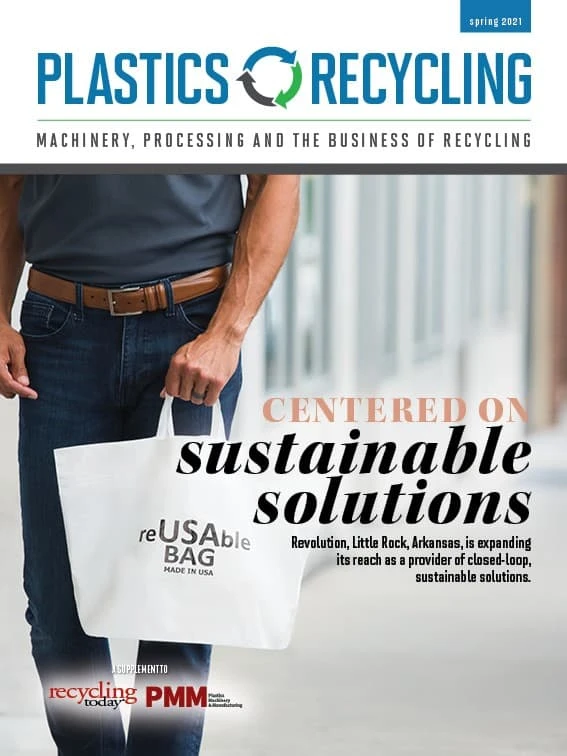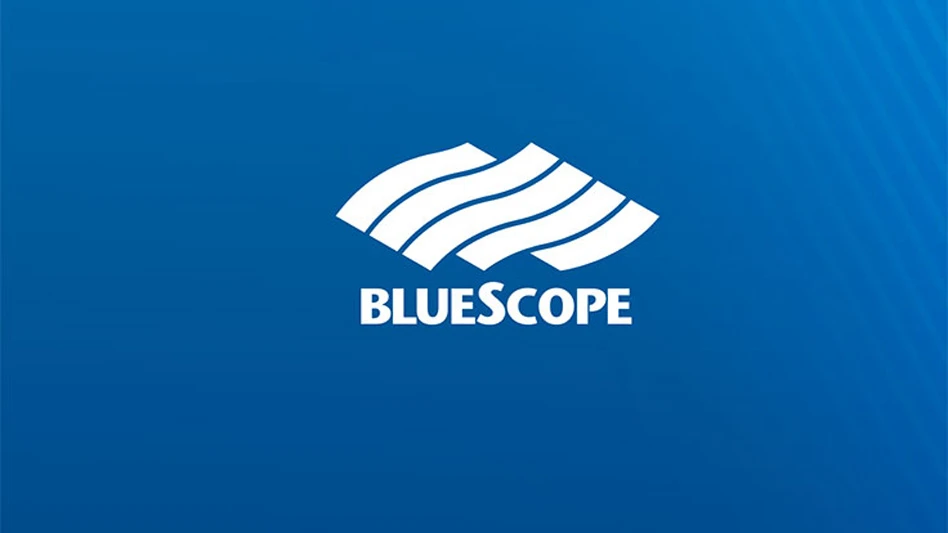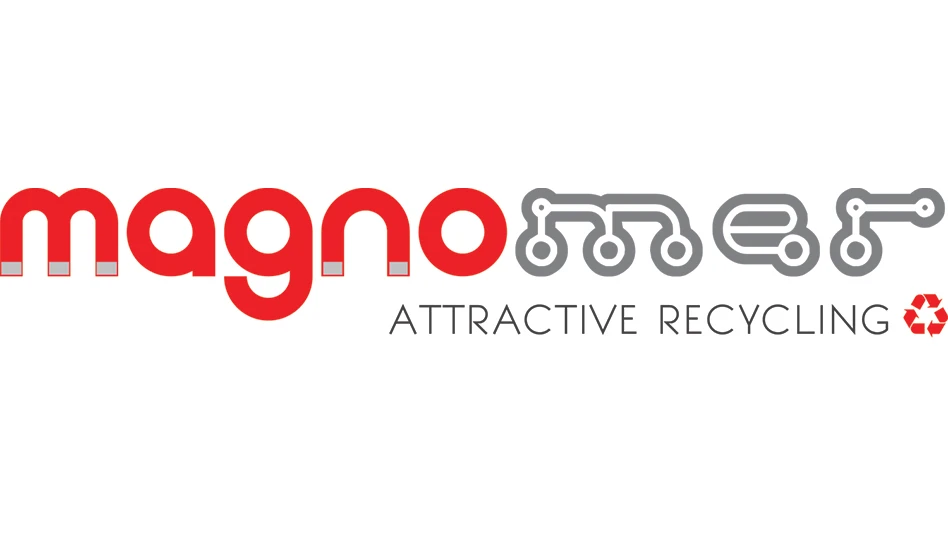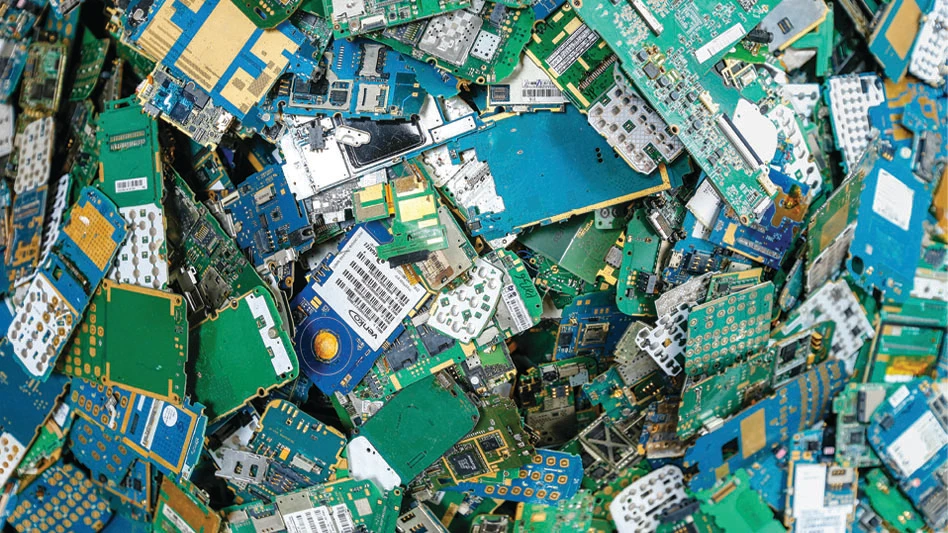
The ocean plastics crisis and resultant social pressure have led many brands to set aggressive targets for the use of recycled materials in their plastic packaging. However, the latest data from the Ellen MacArthur Foundation indicate that brands have a long way to go to meet 2025 recycled-content targets, even as total plastics use is increasing. In fact, commitments to use recycled content in packaging exceed available supply. Meanwhile, certain packaging materials, such as polypropylene containers and polyethylene terephthalate thermoformed containers, aren’t making it through recycling systems to end markets and are at risk of being dropped from municipal recycling programs.
We need creative solutions to help ensure that plastics can be successfully returned to the economy and that brands know that the materials they’re buying will help meet their goals.
With this in mind, GreenBlue, Charlottesville, Virginia, has partnered with NSF International, Ann Arbor, Michigan, to develop the Recycled Material Standard (RMS), a voluntary, market-based framework that enables consistent labeling of products and packaging that contain or support certified recycled material. The RMS was developed as a multistakeholder initiative using a consensus process. Those involved in shaping the standard are thought leaders in advancing the circular economy:
- Eastman;
- EFS-Plastics;
- Eureka Recycling;
- Georgia Institute of Technology;
- Havi;
- King County, Washington;
- Mars Inc.;
- Ocean Conservancy;
- Printpack;
- TC Transcontinental; and
- Sealed Air.
During the process of developing the standard, GreenBlue and NSF solicited input from stakeholders representing all segments of the value chain, as well as from other key groups, such as government and nonprofit organizations, through an advisory group. Interested parties also had the opportunity to provide feedback during a public comment period from November 2020 through January of this year; these comments were taken into consideration as the standard was finalized.
What will the RMS achieve?
The RMS is designed to address some of the key obstacles that are limiting the growth of the recycling industry. First, the recycling industry has long needed a mechanism for leveling the playing field in terms of authenticating claims of recycled content. With no way to validate recycled materials on the molecular level and no way of tracing postconsumer resin (PCR) and postindustrial resin (PIR) once the material is transformed, the industry has had to rely only on trust when it comes to claims of recycled materials. Are all recyclers doing it right? This is a question many recyclers themselves ask, along with the customers they serve. With the RMS, a set of rules and a method for tracing that material from bale to finished product are available. Transactions that took place on trust now can occur with assurance of third-party auditing.

Second, the aggressive recycled-content goals set by brand owners and retailers will need to be carefully tracked and reported. By offering a system that covers PCR and PIR, they can confidently track how much PCR is being consumed on an annual basis. While packaging goals are structured around PCR, including PIR in the scope of the standard is important for other industries, such as automotive and building and construction, where PIR is an vital source of supply and a good deal of innovation is happening to help increase use.
Lastly, by developing a system that offers traceability, the RMS offers brands a means to publicly demonstrate their commitment to support the growth of the recycling industry. With plastic pollution being one of the most visible issues of concern for consumers, brands will benefit from highlighting their focus in this area, and the certified RMS suppliers to these brands will benefit as well.
Flexibility in making claims
The RMS recognizes the challenges faced by the recycling industry and value chain in incorporating higher levels of recycled content into products and packaging. To address these challenges, it provides flexible certification options using three different methods of accounting, resulting in three types of claims that can be used with products or packaging.
The first option is the most recognizable: an average-content claim. This is used in cases where the recycled material can be segregated from virgin material and is physically present in the product or package to which the claim is applied. While average-content claims commonly are used today, RMS adds assurance of the claim’s validity by incorporating chain-of-custody tracking of materials through the supply chain.
Secondly, the RMS adds flexibility by allowing claims based on mass balance accounting. While mass balance has long been used for other types of environmental claims, such as sustainable forest products, cotton, cocoa, palm oil and even recycled paper products, it is relatively new in the plastics space. Within a mass balance accounting system, the volume of certified product entering the operation is controlled, and an equivalent volume of product leaving the operation can be sold as certified. However, the recycled material is not necessarily physically present in the certified material leaving the operation. This type of accounting provides much-needed flexibility in cases where it is difficult or impossible to physically segregate recycled from virgin materials—for example, when outputs from a chemical recycling process are combined with virgin materials in a steam cracker to take advantage of economies of scale.
Finally, the RMS will create a new environmental commodity, known as attributes of recycled content, or ARCs. Similar to renewable energy certificates (RECs) for renewable energy, ARCs separate the environmental attribute from the physical material and allow it to be traded on the open market. To avoid double counting, the corresponding physical material is sold without a recycled claim. Meanwhile, users of plastics can purchase and retire ARCs and, by doing so, provide financial support to investments in material reprocessing. When ARCs are paired with plastics of the same type used in a finished product or package, that item can carry a claim that it supports investments in recycling.
What’s the benefit for recyclers?
Recyclers are presented with a number of certification options because certification is becoming increasingly important to bring transparency and credibility to an otherwise somewhat unregulated system. But the value certification brings to the supply chain can translate to real financial value for recyclers. Being able to offer a product that is certified can foster preferential buying and customer loyalty, and this will ultimately help a recycler’s bottom line.
The RMS is unique in this increasingly crowded field of certifications and should be considered for various reasons. First, brands that want to use an on-package label to communicate with customers will need to seek out suppliers that also are RMS certified, meaning your RMS certification will make you a preferred material supplier for the major brands that have been supporting the development of the standard.
Second, only recyclers are eligible to generate ARCs, an environmental commodity that can be tracked and traded through the registry. Unlike other certificate trading schemes being developed, which allow credits to be generated at many points along the recycling value chain, the developers of the RMS believe the most urgent need for investments is in reclamation. Increasing collection and end-market demand are important, but ensuring the capacity and capability exists to process the material will be the key to circularity success in the U.S. By participating in the ARC trading system, we can help target new investments for growth in reclamation activities as well as assist recyclers in offsetting the premium costs of quality recycling services.
Lastly, the RMS has been designed to address the concerns expressed by nongovernmental organizations, or NGOs, such as the World Wildlife Foundation and the Ellen MacArthur Foundation, around the application of concepts like mass balance accounting and certificate trading. The participating members developing the RMS have considered the concerns of other systems that could lead to allegations of greenwashing or run contrary to the Federal Trade Commission’s guidelines for environmental claims. Those focus areas the RMS addresses include demonstrating additionality for ARCs, defining how volumes can be attributed in mass balance allocation, ensuring calculation of yield losses and defining the treatment of fuels and other energy products created in chemical recycling processes.
The benefits of RMS certification extend far beyond recyclers. The value created at the beginning of the chain of custody extends to all parties in an RMS supply chain, with the end result being sound measurement and reporting toward circularity goals, increased consumer trust in the recycling system and increased brand equity for all involved in the manufacturing of an RMS certified product.
Getting certified
Based on feedback from those who have helped develop the standard and those who have provided public comment, we expect immediate demand for certification. We look forward to seeing how advancing the use of recycling materials through the RMS system shapes the industry, bringing transparency to recycled-content claims and new investments to the recycling system. These are the advances necessary to prepare the industry to meet the needs of the new circular economy.

Explore the Spring 2021 Plastics Recycling Issue
Check out more from this issue and find your next story to read.
Latest from Recycling Today
- BASF collaborates to study mechanical plastic recycling
- Commentary: navigating shipping regulations for end-of-life and damaged batteries
- Haber raises $44M to expand to North America
- Canada Plastics Pact releases 2023-24 Impact Report
- Reconomy brands receive platinum ratings from EcoVadis
- Sortera Technologies ‘owning and operating’ aluminum sorting solutions
- IDTechEx sees electric-powered construction equipment growth
- Global steel output recedes in November





